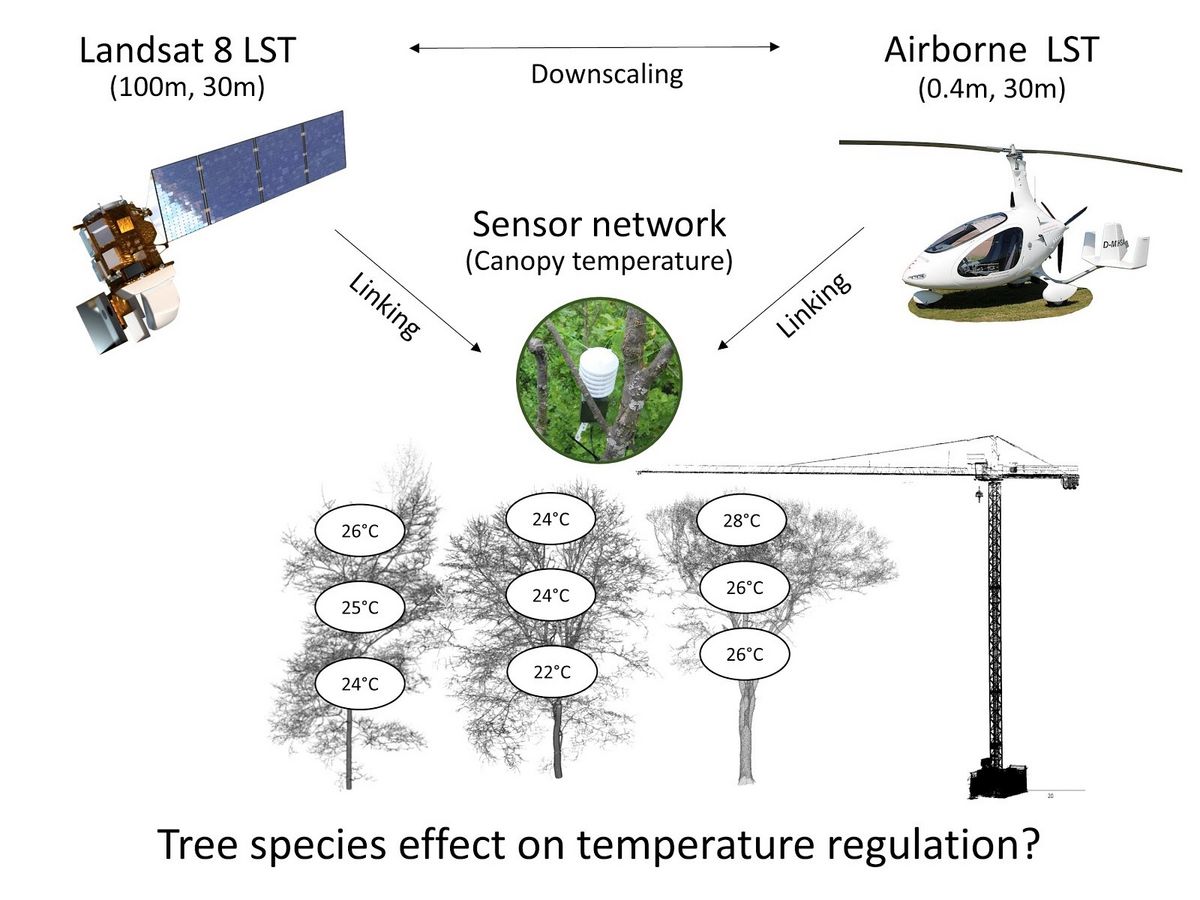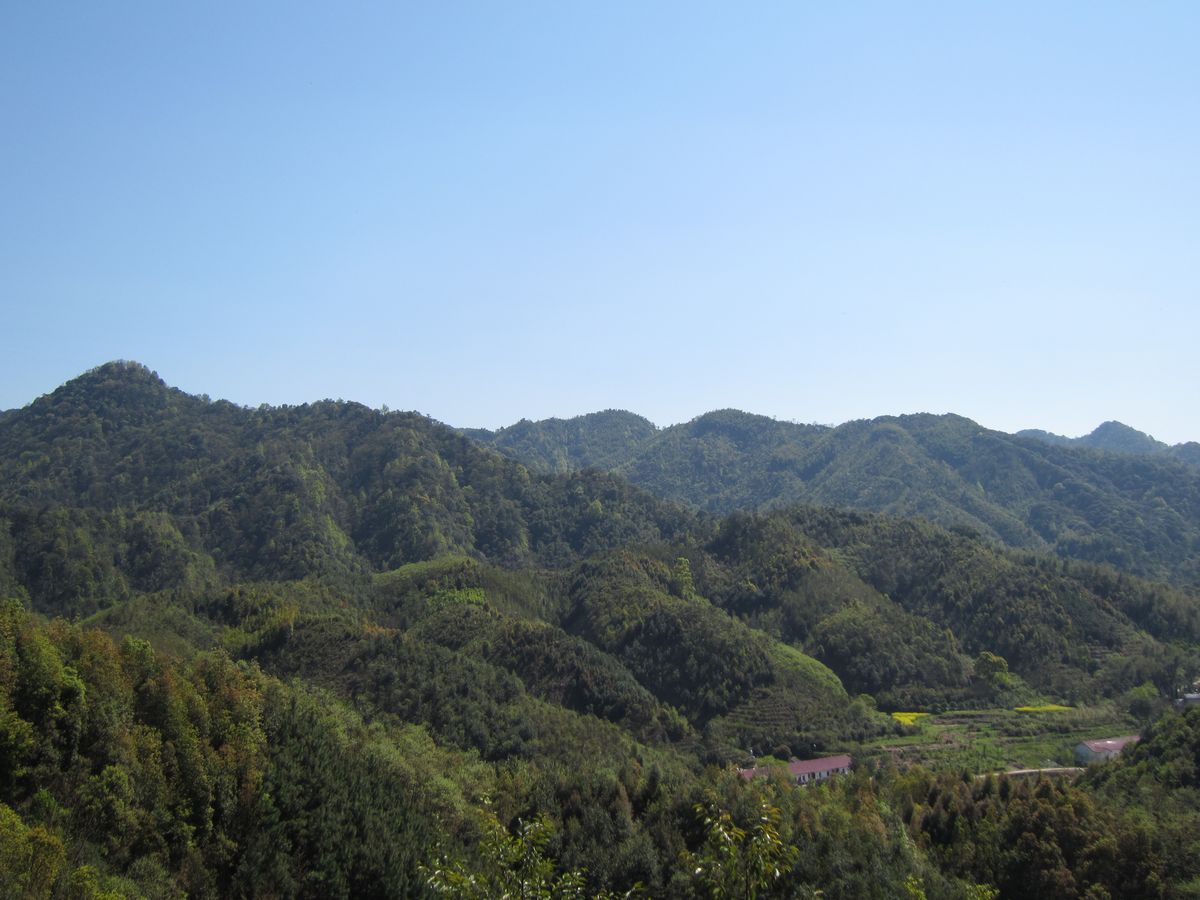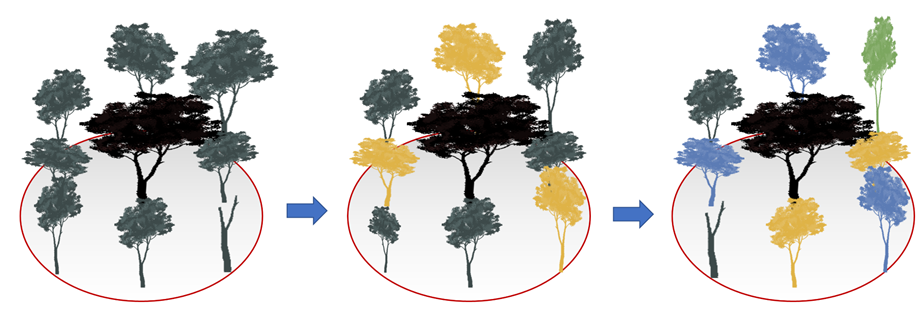In our working group we are investigating several projects in forest ecosystems
The Leipzig Canopy Crane (LCC) research facility was launched in 2001 in cooperation with the University of Leipzig, the Helmholtz Centre for Environmental Research (UFZ), the City of Leipzig and the Liebherr company. With the financial support from the Federal Ministry of Education and Research (BMBF) it was the first long-term project to investigate the biodiversity and ecology in tree crowns in Central Europe. After the flood damage suffered in 2013, the research crane was put back into operation by the German Centre for Integrative Biodiversity Research (iDiv) Halle-Jena-Leipzig and the University of Leipzig in 2014. Since that time the LCC is a research platform of iDiv. The Leipzig Canopy Crane is a tower crane (Liebherr 71 EC), which has a total height of 40m and a 45m long, 360° slewable jib. It is mounted on a 120m rail and allows access to a total area of 1.6 ha that can be examined in three-dimensional space. The maximum working height for scientists is 33m. Standing in a gondola attached to the crane hook, the researchers can independently manoeuvre precisely in the crown area by using a radio remote control. The aim of the individual scientific subprojects are to record the intrinsic biodiversity within the canopy and to analyse and understand the functions and interactions of their individual components.
This project is performed by Ronny Richter (Supervised by Prof. Dr. Christian Wirth, Prof. Dr. Michael Vohland and supported by Rolf Engelmann)
Structure and diversity of forests are intrinsically coupled to their ecosystem services. This also applies to the cooling effect of forests, which is in particular relevant in the context of urban heat islands and hot periods. In a multiscale approach (field, airborne and satellite data) we study how species diversity, composition and structure of an urban forest (Leipziger Auwald, Saxony, Germany) modulate this cooling effect, which includes an instrumentation of tree crowns with temperature/humidity sensors to understand the tree species-specific differentiation, the acquisition of airborne thermal data to analyse spatial temperature variations systematically and Landsat-8 satellite data to explore the potential of downscaling satellite thermal data to a finer spatial resolution.
Check the newest publication of this project here:
The BEF-China experiment (BEF - Biodiversity and Ecosystem Functioning ) is the largest tree diversity experiment worldwide. It is situated in the highly diverse subtropical forests of China and features a gradient of species richness with 1-24 tree species planted at two sites (each around 20 ha in size) as well as comparative study sites in near natural forests. A total of 400 000 trees and shrubs were planted in 2009 and 2010 at site A and B, respectively. The main aim of BEF-China is to understand the influence of tree and shrub species diversity on key ecosystem functions in Chinese subtropical forest ecosystems. These ecosystem functions include among others carbon sequestration, soil erosion prevention and biodiversity conservation. BEF-China has been established as result of the former DFG Research Unit 891, funded by the German Research Foundation (DFG FOR 891/1-3), with additional funds from the National Natural Science Foundation of China (NSFC) and the Swiss National Science Foundation (SNSF) and is part of the Global Network of Tree Diversity Experiments (TreeDivNet).
Tree interaction history and temporal complementarity
This project is performed by Florian Schnabel (supervised by Prof. Christian Wirth and Prof. Jürgen Bauhus)
"TreeDì - 林地 - TreeDiversity Interactions: The role of tree-tree interactions in local neighbourhoods in Chinese subtropical forests" is an International Research Training Group funded by the German Research Foundation (DFG) and the University of Chinese Academy of Sciences (UCAS). The main aim of TreeDì - 林地 (lín dì, forest land) is to understand how local tree-tree interactions scale up to the observed positive tree species richness effects on key ecosystem functions at the community scale. In total 18 PhD projects (9 German; 9 Chinese) set out to answer different facets of this question.
In our project “Tree interaction history and temporal complementarity (P3G)” we aim to:
- Assess how neighborhood diversity affects water use efficiency (~stomatal closure) and growth during drought years for tree species with contrasting stomatal control (water savers vs. spenders)
- Examine the effect of contrasting climatic conditions on diversity-stability relationships across scales from the local tree neighbourhood to the forest community
Find more about Florian Schnabel at IDiv.
The arboretum ARBOfun is a research platform that allows us to carry out functional biodiversity research comparing functional traits of many different tree species. It harbors 100 different tree species mostly representing species in Central Europe each replicated 5 times. The arboretum was established between 2012 and 2014 in an area of ~ 2.5 ha where we planted 500 trees in a randomized block design with 5.8m distance between individuals. ARBOfun serves two functions: science and environmental education – it provides the unique opportunity to investigate diversity effects of 100 woody species in one single area under the same environmental conditions. And it also allows the perception of morphological, anatomical and physiological differences between various species for pupils, students and other interested persons. ARBOfun was funded by University of Leipzig, the EU-Project FunDivEurope (Seventh Framework Program) and the German Center for Integrative Biodiversity Research (iDiv) Halle-Jena-Leipzig.




